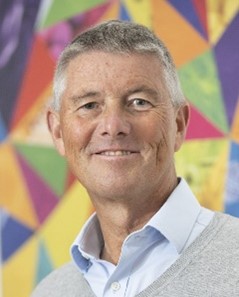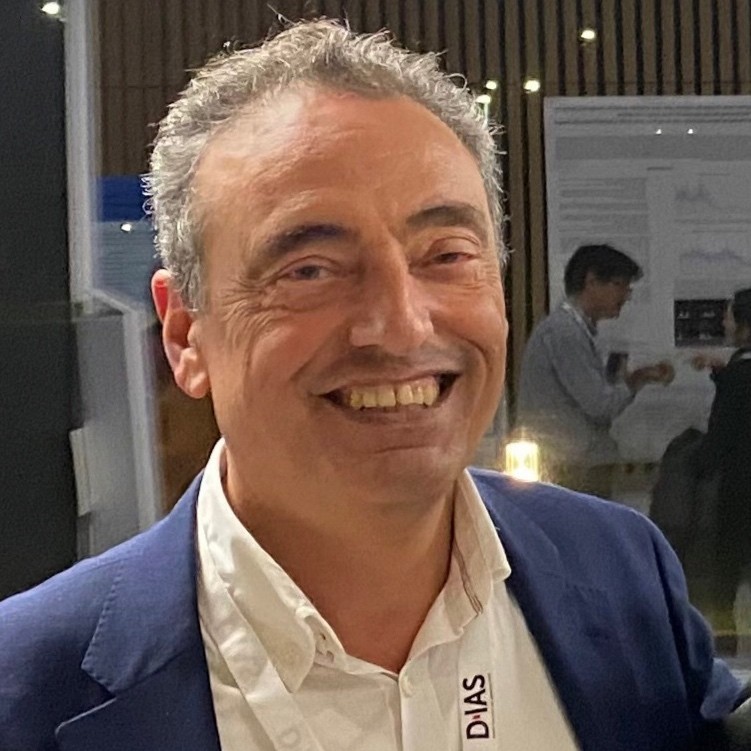On 20 and 21 May 2025, ERA4TB will be opening up the key-note speeches at its annual consortium meeting to public viewers. Interested members of the public can register to view the sessions online.
There are four planned presentations across the two days. On the morning of 20th May, Stewart Cole and Marco Cavaleri will speak from 10.00am CEST on antimicrobial resistance and regulatory perspectives on drug development. On 21st May, from 9.00am CEST, Ann Ginsburg and Carlos Martin will then present on the topic of TB vaccines. Read on for full details of each of the speakers and what their presentations will cover.

Professor Stewart Cole
ERA4TB’s scientific leader and former director of the Institut Pasteur, Paris
“A medical apocalypse, a world without antibiotics”
Since their introduction in the 1940s, antibiotics have transformed modern medicine and helped extend human life expectancy by combating infectious diseases. Today, many medical interventions, such as dental surgery, knee replacements, and organ transplants, rely on antibiotics to prevent bacterial infections and protect lives. Alarmingly, resistance to antibiotics, which is commonly known as antimicrobial resistance (AMR), is increasingly widespread and treatment options have become scarce. Many different factors have contributed to this worrisome situation, ranging from the overuse of antibiotics in human medicine, to the misuse and abuse of antibiotics in the agricultural and food sectors.
AMR is now recognized as one of the top 10 global health threats and modelers estimate that by 2050, up to 10 million people could die from AMR-related causes annually. The World Bank predicts that from 2015 to 2050, the cost of AMR on healthcare alone will be $ 3.5 billion per year. Despite the clear benefit to society, few pharmaceutical companies are developing new antibiotics as the financial incentives to do so are considered insufficient. We are facing a medical apocalypse, this presentation will explain the underlying reasons for this and also present some hope, with examples from the field of tuberculosis, where the situation has improved significantly in the last decade.

Marco Cavaleri
Head of anti-infectives and vaccines at the European Medicines Agency
“EMA perspective on development of new TB medicines”
EMA has significantly engaged over the years on the development of new medicines for treating and preventing TB. In 2017, EMA issued an updated guideline to cover the clinical and preclinical requirements for new TB drugs. This guideline in conjunction with the general guideline for antibacterial agents and the guideline on PK/PD aspects of antibacterial agents provide the basis for guiding developers on how to design studies and clinical trials to secure regulatory approval.
PK/PD has been extensively used in the context of new antibacterial agents and similar concepts could be applied to TB agents. Hollow fiber model has received methodology qualification as an appropriate and valid method to investigate the PK/PD of TB drugs.
More engagement through the Emergency Task Force (ETF) now in charge of providing scientific advice on TB drugs and vaccines would be expected so to advance new proposals on translational science from use of animal models to new tests to measure sputum conversion.

Ann Ginsberg
Director of the tuberculosis vaccine program at the Bill & Melinda Gates Foundation
“M72/AS01 in the context of the TB vaccine clinical pipeline”
There are currently an unprecedented number of TB vaccine candidates in clinical development including six in Phase 3 licensure trials. However, to date, only one candidate has demonstrated efficacy proof of concept and meets key WHO Preferred Product Characteristics – the adjuvanted recombinant protein candidate, M72/AS01E. These six trials and three Phase 2b proof of concept atudies should yield results within the next approximately five years, providing a relative wealth of human safety, immunogenicity and efficacy data. Together these results will inform research and development of “next generation” candidates and potentially enable licensure of the first novel TB vaccine(s) in over one hundred years. The history and progress of M72/AS01E development, and ongoing challenges and opportunities in TB vaccine R&D, will be described.

Carlos Martín
Lead researcher of the Mycobacterial Genetics Group, University of Zaragoza
“MTBVAC: A TB vaccine candidate in the process of clinical validation”
Currently, 15 tuberculosis vaccine candidates are in clinical Development. MTBVAC is one of these candidates and is the only live attenuated vaccine derived from a clinical isolate of Mycobacterium tuberculosis. Unlike BCG, which is derived from Mycobacterium bovis and is still the only licensed TB vaccine in use today, MTBVAC contains the complete antigenic repertoire of M. tuberculosis.
Since 2008, the University of Zaragoza has partnered with Biofabri, a biopharmaceutical company in Galicia (Spain), part of the Zendal group, as the industrial partner responsible for MTBVAC’s clinical and industrial development. The project is supported by TBVI (TuBerculosis Vaccine Initiative). This talk will discuss results of clinical studies on MTBVAC in adults and in newborns, and current and on-going trials and what these may tell us about MTBVAC in the future.









